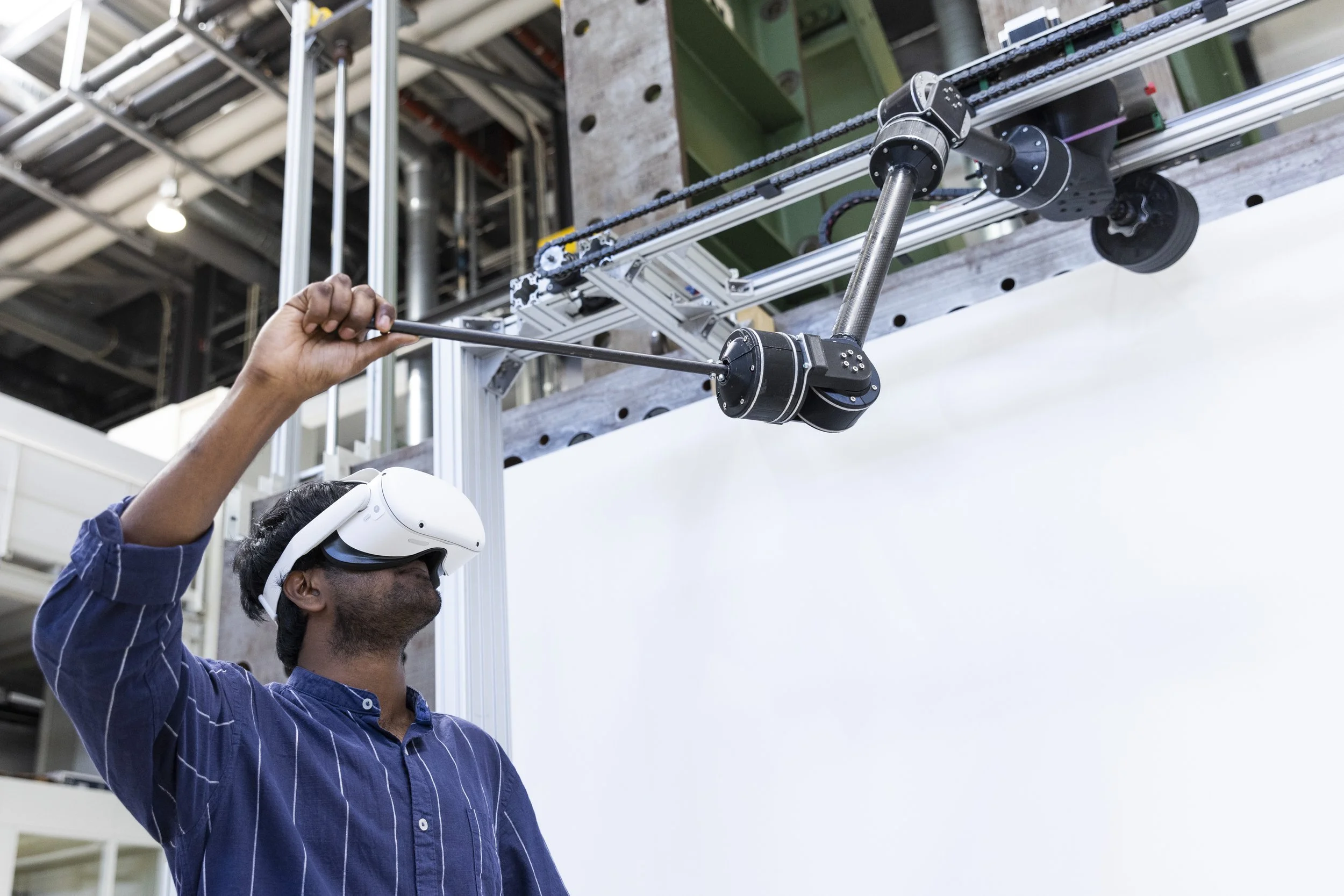Other Projects
2014-2023, France, Italy, Germany
Soft Skills:
Leadership, Problem-Solving, Effective Communication, Empathetic Design
Tools:
Microsoft Teams, Microsoft Office, Design-Thinking
Technical Skills:
CAD Modeling, Prototyping, Systems Design, Robotics Engineering, R&D, Requirements Gathering
Tools:
Fusion 360, ROS (Robot Operating System), ANSYS
ANGSA Trash Robot - 2021
Publication:
Anand Vazhapilli Sureshbabu, N. M. Martins Pacheco, L. I. Duran Noy, and M. Zimmermann. "Design of an autonomous trash-picking service robot focussed on human-robot interaction."
Description
The project embarked on a mission to challenge the way service robots are designed with a student team for the German startup ANGSA Robotics, by prioritizing human-robot interaction (HRI) from the outset. Using the double diamond design process framework, we developed an autonomous trash-picking robot that not only performs its intended function with efficiency but also engages with users in a manner that is intuitive and user-friendly. The robot's design was informed by a deep understanding of the nuances of public HRI, ensuring that it could operate seamlessly within human-centric environments.
The hardware of the robot was meticulously crafted to embody expressivity and approachability, key factors in fostering positive user interactions. The design process was iterative and inclusive, incorporating feedback from potential users to refine the robot's social capabilities and appearance. This approach ensured that the robot was not just a tool for cleaning but a sociable presence in public spaces, capable of eliciting a sense of connection and cooperation from those it served.
Results
The implementation of HRI-focused hardware features was deemed a success, with the robot demonstrating a high degree of ease of operation and usability during field tests. The robot's Minimum Viable Product (MVP) version was deployed in various outdoor settings, where it interacted with a diverse range of users. The feedback was positive, with users commending the robot's social capabilities and the naturalness of its interactions.
The project's outcomes underscored the significant advantages of integrating p-HRI elements into the hardware design from the conception stage. By doing so, the robot was not only able to fulfill its functional role but also to enhance the user experience, thereby increasing the likelihood of user acceptance and long-term adoption. This work emphasises the importance of HRI and paving the way for future innovations in autonomous service robots that are as personable as they are practical.
Imperial Dance Robot - 2022
Publication:
Anand Vazhapilli Sureshbabu, Pacheco, NM Martins, E. Dieckmann, M. Apud Bell, S. Green, P. Childs, and M. Zimmermann. "Challenges and Opportunities in Remote Prototyping: A Case-Study during COVID-1." Proceedings of the Design Society 2 (2022): 231-240.
Description
In collaboration with Imperial College London during the challenging times of the COVID-19 pandemic in 2021, we embarked on a unique student project that transcended the barriers of remote collaboration. Our objective was to create a robot that could assist in teaching salsa dance through the use of recorded trajectories, offering an immersive learning experience via a VR headset. This innovative approach allowed users to visualize and follow the movements of a virtual instructor, guiding them through the dance steps in a synchronized fashion with the robot.
The project was a testament to adaptability and innovation in the face of unprecedented global challenges. We leveraged a variety of digital tools to facilitate remote brainstorming, design, and prototyping, ensuring that the creative process remained uninterrupted despite the physical distance between team members. The use of VR technology was particularly instrumental, not only in the robot's function but also in enabling the team to collaborate effectively on design elements and user experience.
Results
Our project culminated in the successful creation of a salsa-teaching robot, a success story for remote collaboration. Despite the logistical challenges posed by the pandemic, our team, in partnership with Imperial College London, adeptly utilized digital tools to design and prototype a robot capable of replaying dance movements in sync with a virtual reality experience. This robot not only serves as a novel educational tool but also stands as a symbol of the potential for remote collaboration in robotics. The project's documentation, "Challenges and Opportunities in Remote Prototyping: A Case-Study during COVID-19," provides a comprehensive analysis of the tools and techniques that facilitated this achievement. It emphasizes the importance of integrating various digital platforms to support the design process and highlights the potential for future advancements in virtual prototyping and haptic technology to enhance remote interaction with educational robots.
Roboy 3 - 2019-21
Description
This was an interesting collaboration with Rafael from the Devanthro company. In my role as a mentor for the Roboy 3.0 project, I had the unique opportunity to contribute to the evolution of one of the most distinctive humanoid robots in the field, renowned for its musculoskeletal design. This sophisticated system, which closely mirrors the human body's own structure, utilizes specialized "actuation" units that precisely control the robot's tendons. My guidance in the development of Roboy's torso, arms, and hands was crucial in achieving a harmonious integration of these components, ensuring lifelike movements that challenge the conventional boundaries of robotics.
Results
The key achievements of this project include the successful implementation of tendon-driven actuation units, which empower Roboy with remarkably human-like gestures and dexterity. The torso I helped to develop is the embodiment of a design philosophy that seeks to replicate human anatomy and function in robotic form. This approach has significantly advanced Roboy's capabilities in interacting with the world, making it an invaluable asset for research in areas such as prosthetics, rehabilitation, and human-robot collaboration. The project's success is also a testament to the power of collaborative learning, with students gaining unparalleled experience in the practical application of biomechanics and robotics.
Calibration Device for Tactile Skin - 2017
Publication:
Kangro, Joan, Anand Vazhapilli Sureshbabu, Silvio Traversaro, Daniele Pucci, and Francesco Nori. "A plenum-based calibration device for tactile sensor arrays." IEEE Robotics and Automation Letters 3, no. 4 (2018): 3937-3943.
Description
The project focused on the development of a plenum-based calibration device, a groundbreaking tool designed to streamline the calibration process of tactile sensor arrays, commonly referred to as artificial skins, in robotics. Before the development of this device, normal calibration of a patch of tactile sensor arrays would take up to two days to be calibrated, since it is a laborious process and the aim was to cut down on this time and find a smarter way to do this kind of calibration. These sensor arrays are crucial for detecting contact points and measuring the force exerted on a robot's surface, enhancing its interaction with the environment. Traditional calibration methods were laborious and time-consuming, but our device introduced a swift and straightforward alternative. By inserting the artificial skin into a specially designed plenum chamber, we could calibrate the tactile sensors efficiently by correlating air pressure changes with sensor responses.
Results
The device's efficacy was rigorously tested and validated using the iCub robot's skin, though its versatility allows for adaptation to other sensor types with minimal software adjustments. Our experiments demonstrated that the device could calibrate hundreds of sensors within minutes, significantly reducing effort and increasing precision. Unlike previous methods, our device avoided premature sensor saturation and extended the maximum calibration range beyond the limitations of atmospheric pressure. The validation process, involving known weights placed on the skin, confirmed the device's accuracy in force estimation, marking a significant advancement in the field of tactile sensing for robotics.
Aldebaran Pepper Project - 2013-14
Description
This was my first industry job in the EU. As part of the R&D team at Aldebaran during the transition period to Softbank, I was tasked with exploring feasible, cost-effective designs for robotic hands. This was a unique opportunity to work on cutting-edge technology in a rapidly changing environment.
One of the key challenges was balancing the need for functionality with the need to keep costs down. Robotic hands need to be able to perform a wide range of tasks, from simple grasping to complex manipulation. However, they also need to be affordable enough to be used in a variety of applications.
Results
We were able to develop a number of cost-effective robotic hand designs that were still capable of performing a wide range of tasks. These designs were prototyped and tested in-house to figure out the best trade-off for a functional hand with the higher goals of keeping costs down for a commercial robot. Working on this project was brief, but gave me a deep understanding of the challenges and opportunities of developing cost-effective robotic hands. It also taught me the importance of collaboration between design and manufacturing teams.





